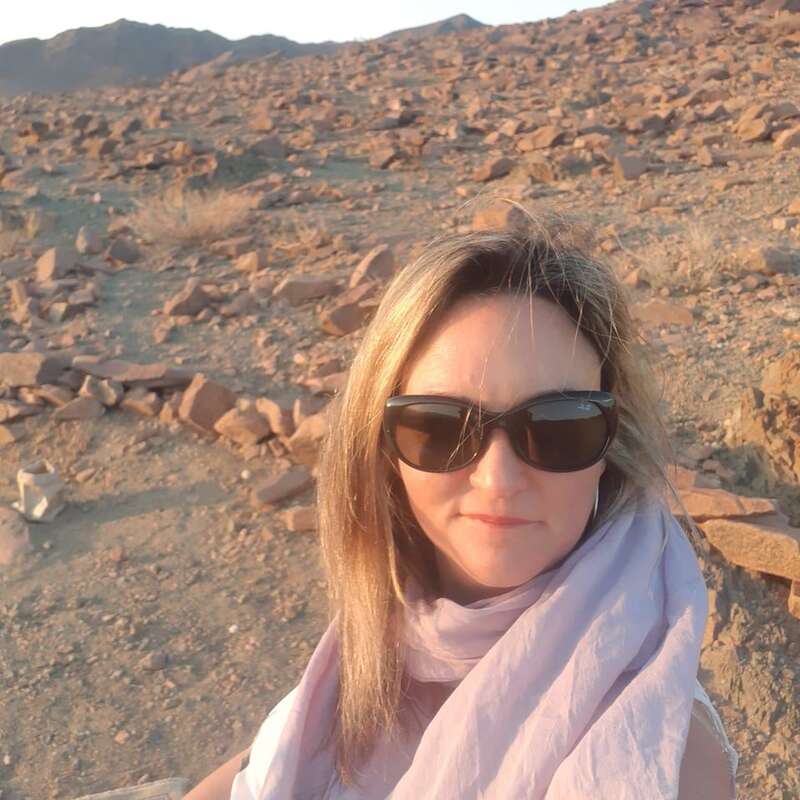About Skeleton Coast Shipwreck Lodge
Balancing rugged beauty with contemporary style, Shipwreck Lodge enables you to experience the remoteness of the Skeleton Coast in comfort.
Shipwrecks can be the stuff of fantasy – delivered at Shipwreck Lodge complete with mist-shrouded sands and crashing seas.
Marooned on Namibia's desolate and remote Skeleton Coast, the lodge feels almost part of a film set, its rooms seemingly scattered across the sands like so much fragile matchwood.
On closer inspection, the debris transmutes into light-wood cabins with great big picture windows that bring the sea to you – without the waves and the salt-stinging wind; toasty wood burners keep the cold at bay, and colourful fabrics offset the oft-monochrome hues of your surroundings. What better way to immerse yourself in fantasy than in warmth and comfort?
Should fair weather prevail, Shipwreck Lodge is fully prepared, with sunloungers on the sea-facing deck. But if the wind rises while you're enjoying your afternoon tea or a spectacular sunset over the Atlantic Ocean, blankets are on hand so you can cosy up and carry on.
Lining these inhospitable shores are Cape fur seals, closely followed by black-backed jackals and solitary brown hyenas, while on the ephemeral Hoarusib River, desert-adapted elephant ekes out a living. So whether on foot, on a quadbike, or in a rugged 4WD, keep your eyes peeled. Even the scuttling crabs are worth seeking out.
Our view
Staying at Skeleton Coast Shipwreck Lodge is a real wilderness experience. With its extremes of weather, ranging from foggy mornings and evenings to scorching sun, high winds and bitterly cold nights, this is the Skeleton Coast at its rawest and most spectacular. In contrast to the environment, the lodge is a comfortable, cosy and eminently photogenic hideaway with attentive staff, and a good range of activities allowing guests to explore the surrounding area.
Accommodation
10 rooms
Children
Best for 12+
Open
All year
Activities

4WD Safari

Birdwatching

Dune-boarding

Private activities

Quad-biking
Traveller reviews of Skeleton Coast Shipwreck Lodge
10 real, un-edited reviews from Expert Africa's travellers.
Arrived 12 Jul 2024, 2 nights
"Skeleton Coast Shipwreck Lodge review"
Overall rating: Excellent
Arrived 23 Jul 2022, 3 nights
"Skeleton Coast Shipwreck Lodge review"
Overall rating: Excellent
Arrived 19 Jul 2022, 3 nights
"Skeleton Coast Shipwreck Lodge review"
Overall rating: Excellent
Arrived 2 Jul 2022, 2 nights
"Skeleton Coast Shipwreck Lodge review"
Overall rating: Good
Arrived 23 Mar 2022, 3 nights
"Skeleton Coast Shipwreck Lodge review"
Overall rating: Good
Arrived 3 Dec 2020, 2 nights
"Skeleton Coast Shipwreck Lodge review"
Overall rating: Excellent
Arrived 1 Dec 2020, 1 nights
"Skeleton Coast Shipwreck Lodge review"
Overall rating: Excellent
Arrived 22 May 2019, 2 nights
"Shipwreck"
Overall rating: Excellent
Arrived 25 May 2019, 2 nights
"Skeleton Coast Shipwreck Lodge review"
Overall rating: Excellent
Arrived 28 Mar 2019, 3 nights
"A Magical Place"
Overall rating: Excellent
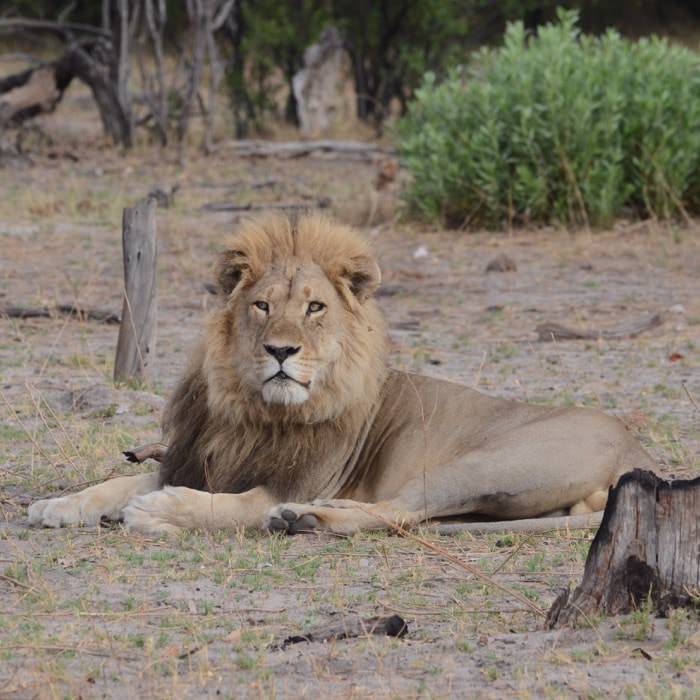



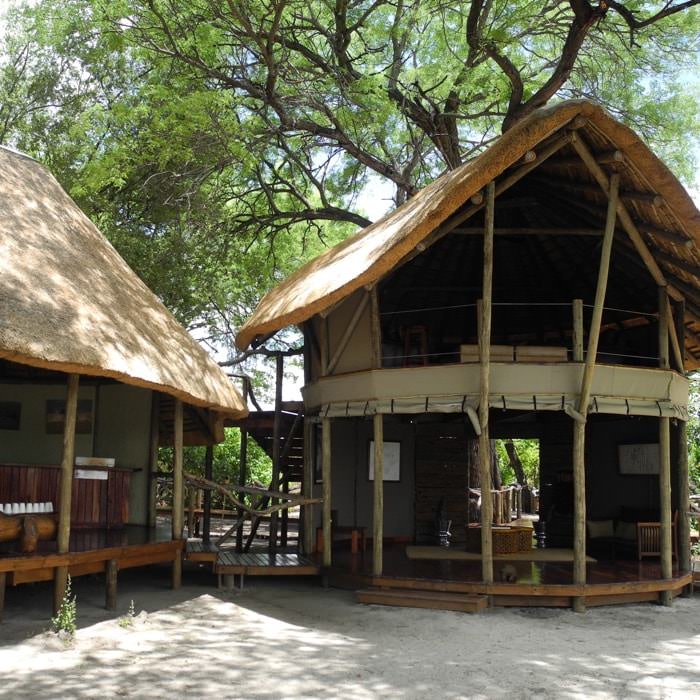

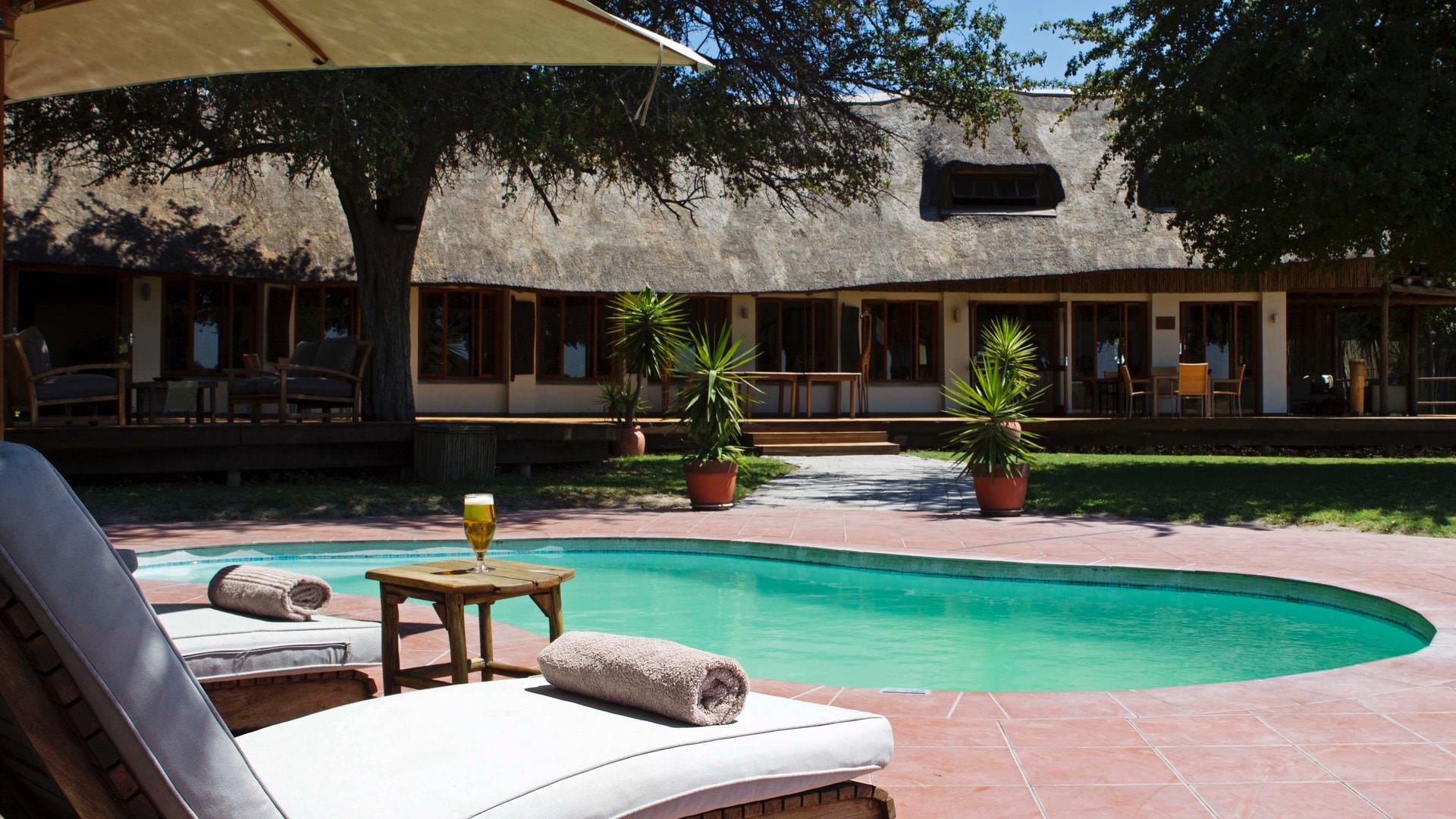
Expert Africa's gallery
When we travel we take lots of photos ourselves to give you a real and un-edited view of the safaris. See our 36 pictures and 1 videos of Shipwreck Lodge to get the candid view.
View gallerySafaris visiting Shipwreck Lodge
Just ideas, we'll always tailor-make a trip for you


Monteiro's Hornbill Fly-in Safari
9 days • 5 locations • 1 country
WINDHOEK AIRPORT TO WINDHOEK AIRPORT
Stay in four of Namibia’s most famous environments on this fly-in safari. It would be hard to pack more variety into a trip of the same length.
Visiting Windhoek, NamibRand and 2 other areas
US$12,160 - US$14,690 per person
Skeleton Coast Shipwreck Lodge: Our full report
Just inland of the Atlantic Coast, Skeleton Coast Shipwreck Lodge lies at the mouth of the Hoarusib River.
Often referred to simply as Shipwreck Lodge, it’s a warm and comfortable oasis that invites exploration of the desolate and otherworldly environment that make up Namibia's mysterious Skeleton Coast National Park.
For many, the Skeleton Coast conjures up images of shipwrecked sailors, whalebones and predators scouring the mist-shrouded coast for their next meal. The combination of mystery and isolation has captured the imagination of many travellers, perhaps fuelled by dramatic accounts from survivors of wrecks such as the Dunedin Star in 1942, or maybe stunning images of the area's desert lion, filmed in the BBC's Planet Earth 2 and reproduced in the book the Vanishing Kings. Since the opening of Shipwreck Lodge in 2018, travellers have finally been able to access this coastline in a way that until now has been impossible.
Constructed of wood and glass, the lodge's ten rooms, including two family rooms, call to mind images of a shipwreck strewn across the dunes. Inside, each is vaguely reminiscent of a ski chalet, with lots of light wood brightened by colourful pillows and blankets, while large windows looking out to sea give a light, airy feel.
Comfy twin or king-size beds have bedside tables and reading lamps, while the family rooms also have a chaise longue that can be made up as a third bed for a child on request. We loved the woodburner in our room, along with our “bushbaby” – or hot-water bottle.
Separating the bedroom from the en-suite bathroom is a small link room that serves as a luggage storage area, with shelves and a small safe. Here you'll also find a writing desk, along with tea and coffee.
The bathroom itself is a wet room whose power shower is particularly impressive given the lack of water here. There are twin basins and a flush toilet, too, while privacy is provided by screens of upcycled driftwood, fishing gear and other flotsam collected from the beach. Natural light is provided courtesy of stylised porthole windows.
Wooden pathways link the rooms to the lodge’s main area, an inviting place to relax away from the often harsh outside conditions. In structure and design, the open-plan building feels like an enlarged version of the individual rooms, with more big glass windows looking out to sea, colourful fabrics and light wood. A large woodburner sets the scene, with plenty of comfy seating including window seats, sofas chairs and pouffes. Then there's a small bar, as well as individual dining tables, a bookcase stacked with plenty to read on the coast and on Namibia as a whole, and board games to while away those odd moments of downtime.
When the weather allows, the deck in front of the main building, complete with some rather optimistic sunloungers, comes into its own. But even on less clement evenings, being wrapped in a blanket, gin and tonic in hand, and watching the sun set as the mist comes rolling in on the wind and the sea crashes in the distance is an eerie and wonderfully refreshing way to enjoy a sundowner.
The Skeleton Coast doesn't feature significant densities of wildlife so come for the location, the scenery and to escape the real world. Desert-adapted elephant, brown hyena and even lion do inhabit the area, but any sightings are very much a bonus.
During our last visit, we were thrilled to learn that one of the resident desert-adapted lions, affectionately known as “Smiley” (named for the way her face appears to smile when she roars), had been spotted near camp. With hearts full of excitement and a sense of adventure, we settled onto the outdoor deck – feeling both secure and hopeful – as we watched the sand dunes, eagerly waiting for her to emerge from the golden landscape
Activities from Shipwreck Lodge reflect the environment, with 4WD excursions heading either up the Hoarusib River, or south down the coast. The first takes in highlights such as the seemingly improbable Clay Castles and the surreal roaring dunes, with a chance of sighting of some of the area's elusive wildlife. To the south, you'll pass the remnants of the Suiderkus and Karimona shipwrecks and the abandoned Westies diamond mine, before ending up at the seal colony at Möwe Bay.
We spent a spectacular afternoon exploring the dunes on a scenic drive that led us to a breathtaking sundowner spot. As we paused to soak in the endless views and wide-open spaces, our guide created the perfect set up. Sitting back with a drink in hand, watching the sun melt into the horizon, was nothing short of magical.
Those wanting a break from the larger 4WD vehicles can also go quadbiking in the dunes around camp, giving a fun and very different take on the surroundings. You can also try your hand at shore fishing (subject to permits) and set out along one of the walking trails through the dunes between the lodge and the beach.
To explore further, consider combining Shipwreck Lodge with its sister property, Hoanib Valley Camp. As part of the 4WD transfer from one lodge to the other, guests spend a full day exploring the Hoanib and Hoarusib riverbeds: a spectacular trip and a unique opportunity to get to grips with yet more of Namibia's most remote landscapes.
Activities
4WD Safari
Birdwatching
Dune-boarding
Private activities
Quad-biking
Families & children
- Attitude towards children
- Families with children are welcome.
- Property’s age restrictions
- No minimum age. Children under the age of 16 may not take part in any quadbiking activities.
- Special activities & services
- Sandboarding can be arranged for children on request.
The lodge can arrange for childcare on request, but please note that this will not be conducted by a trained childcare professional. - Equipment
- Cots can be arranged on request.
- Generally recommended for children
- Given the remote location, relatively adult feel and long transfers to and from Shipwreck Lodge, we think that it is better suited to older children.
- Notes
- Although the lodge is unfenced, the area around is relatively safe and children can be given quite a lot of freedom – but we would still advise adult supervision at all times.
Food & drink
- Usual board basis
- Full Board & Activities
- Food quality
- On our most recent visit the food was fresh, the choice at dinner in particular was greater than we are used to seeing at a Namibian safari lodge, and the execution of everything we ate was excellent. We understand that with advanced notice most dietary needs can be catered for.
A buffet breakfast of cereals, fresh fruit, cold meats, cheeses, fresh pastries or muffins, tea, coffee and fruit juices, is followed by hot dishes prepared to order.
For lunch we were treated to a delicious couscous and vegetable salad, or a tuna salad, with a sorbet for dessert.
Our three-course dinner started with a black bean soup with home made bread rolls. The main course was either fish or beef fillet, with rice and vegetables. This was followed by a choice of a cheeseboard or chocolate Amarula cake. We rounded off the meal with a perfectly made Amarula Don Pedro - Dining style
- Individual Tables
- Dining locations
- Indoor Dining
- Further dining info, including room service
- Private dining can be arranged on request with sufficient notice.
- Drinks included
- Local and house drinks are included; premium drinks such as champagne or specialist whisky cost extra. bottled Water
Our travellers’ wildlife sightings from Shipwreck Lodge
Since mid-2018, many of our travellers who stayed at Skeleton Coast Shipwreck Lodge have kindly recorded their wildlife sightings and shared them with us. The results are below. Click an animal to see more, and here to see more on our methodology.

83% success

40% success

0% success

0% success

0% success

0% success

0% success

0% success
Getting there
- Location
- Skeleton Coast & Kaokoland, Namibia
- Ideal length of stay
- Given the location and the logistics of getting here two nights is the minimum stay, but three would be better.
- Directions
- Fly-in guests are met at Möwe Bay airstrip followed by a 2–3 hour 4WD transfer to the lodge. Self-drive guests get themselves to Möwe Bay, and then use the same transfer.
- Accessible by
- Self-drive or Fly-and-Transfer
Special interests
- Honeymoons
- Honeymoon or not, Namibia is synonymous with escaping into the wilderness and Shipwreck Lodge is about as remote as you can get! This stylish lodge beautifully contrasts the Skeleton Coast’s hostility with cosy cabins, perfect for a romantic escape.
- See ideas for Honeymoons in Namibia
- Photography safaris
- The desolate landscapes, eerie shipwrecks and windswept beaches of Namibia’s Skeleton Coast National Park are worthy photographic subjects in their own right. Combined these with the modern and stylish Shipwreck Lodge and it becomes a photographer’s dream destination.
- See ideas for Photography safaris in Namibia
Communications
- Power supply notes
- There is a backup generator in case the solar power system fails.
- Communications
- WiFi is available in the main area.
- TV & radio
- None
- Water supply
- Borehole
- Water supply notes
- The fully plumbed bathrooms include flush toilets and hot water is provided by solar geysers.
Health & safety
- Malarial protection recommended
- No
- Medical care
- The managers are trained in first aid. The nearest hospital is in Swakopmund.
Quadbike warning: Quadbiking is sometimes available as an activity from Shipwreck Lodge. As with any potentially dangerous activity, it's vital that you take responsibility for ensuring that you have adequate travel insurance prior to getting involved. Be aware that some insurances cover quadbike activities only for bikes with lower engine ratings: check such clauses particularly carefully before you get on a bike. - Dangerous animals
- High Risk
- Security measures
- The camp’s managers and guides all sleep on site.
- Fire safety
- There are fire extinguishers in each room and the main area.
Useful info
- Disabled access
- On Request
- Laundry facilities
- Same-day laundry is included, depending on the weather.
- Money
- Each room has a small electronic safe.
- Accepted payment on location
- The camp accepts cash in Namibian dollars or SA rand and card payment by AmEx, Visa or Mastercard.
Plan and book your trip with Expert Africa
All of our trips are tailor-made, so we'll always adapt them to suit you. Talk to an Expert and let us plan and arrange your perfect trip.

Talk to an Expert
Call or email us now! We’ll match you with the Specialist in our team who is best suited to help you. Then together we can start planning your trip.

Set up your itinerary
Based on our experience and your ideas, your specialist will create a detailed, costed itinerary. We’ll refine it together, until we have a trip that you’re perfectly happy with.

Prepare for your trip
The same Specialist will make the seamless arrangements for your trip, send you detailed travel documents, and be available to answer any questions before you depart.

Travel with peace of mind
After you set off, you’ll be cared for by our partners in Africa, most of whom have worked with Expert Africa for decades. And if you ever need us urgently, we’re available 24/7.

When you return
We love to learn about your trip, and so will always be grateful if you’ve the time to give feedback to your Specialist when you return.
Skeleton Coast Shipwreck Lodge's location
Look closer at the environment and surroundings of Shipwreck Lodge.
Other lodges in Skeleton Coast & Kaokoland
Alternative places to stay in this same area.

Cape Cross Lodge
Right on the Skeleton Coast, between Swakopmund and Damaraland, Cape Cross Lodge has easy access to Cape Cross Seal Reserve.

Hoanib Skeleton Camp Camp
Hoanib Skeleton Coast Camp is actually situated 42km inland in Kaokoland, this said they offer a superb guided day trip to the coast.

Terrace Bay
Terrace Bay is bleak. However, those that stay here come to experience the remote and inhospitable nature of the Skeleton Coast.

Serra Cafema
The luxurious Serra Cafema is in the most remote corner of Namibia - at the north end of Hartmann's Valley, across the Kunene River from Angola.
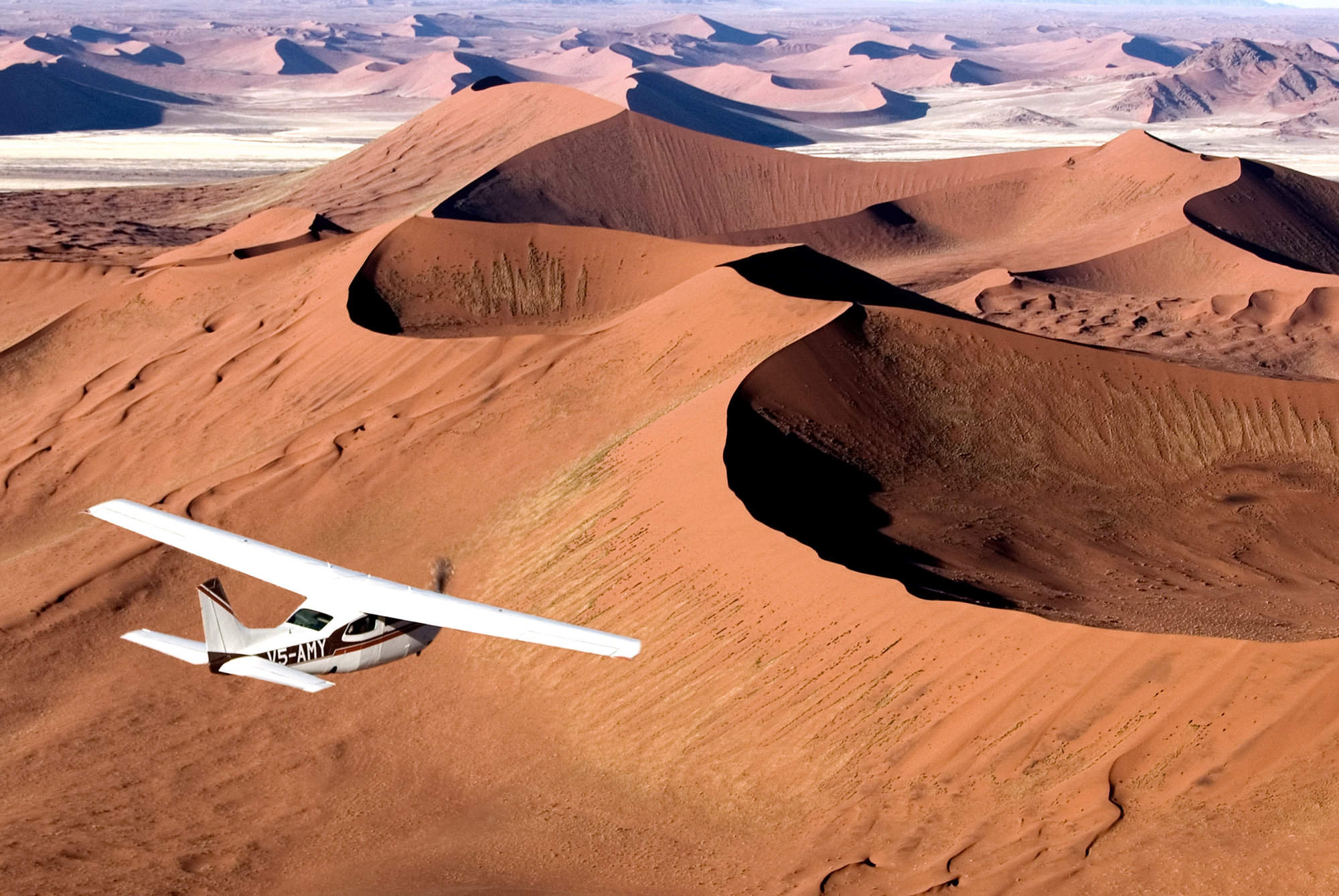
Skeleton Coast Safaris
Skeleton Coast Safaris is a small, family-run operation that has organised inspirational trips to this remote area of Namibia for nearly 50 years.

Hoanib Valley Camp
The intimate and remote Hoanib Valley Camp offers a rare chance to explore this dramatic corner of Namibia and to search for its sparse desert-adapted wildlife.

Opuwo Country Lodge
Opuwo Country Hotel provides comfortable accommodation is well situated for a night's stop before travelling into remote parts of Kaokoland.

Epupa Camp
Epupa Camp is a welcoming oasis set on the palm-fringed banks of the Kunene River in north-west Namibia and close to Epupa Falls.

Leylandsdrift Camp
Used exclusively on the second night of a Skeleton Coast Safari, Leylandsdrift is in a beautiful location and is a good place to track desert-adapted elephants.
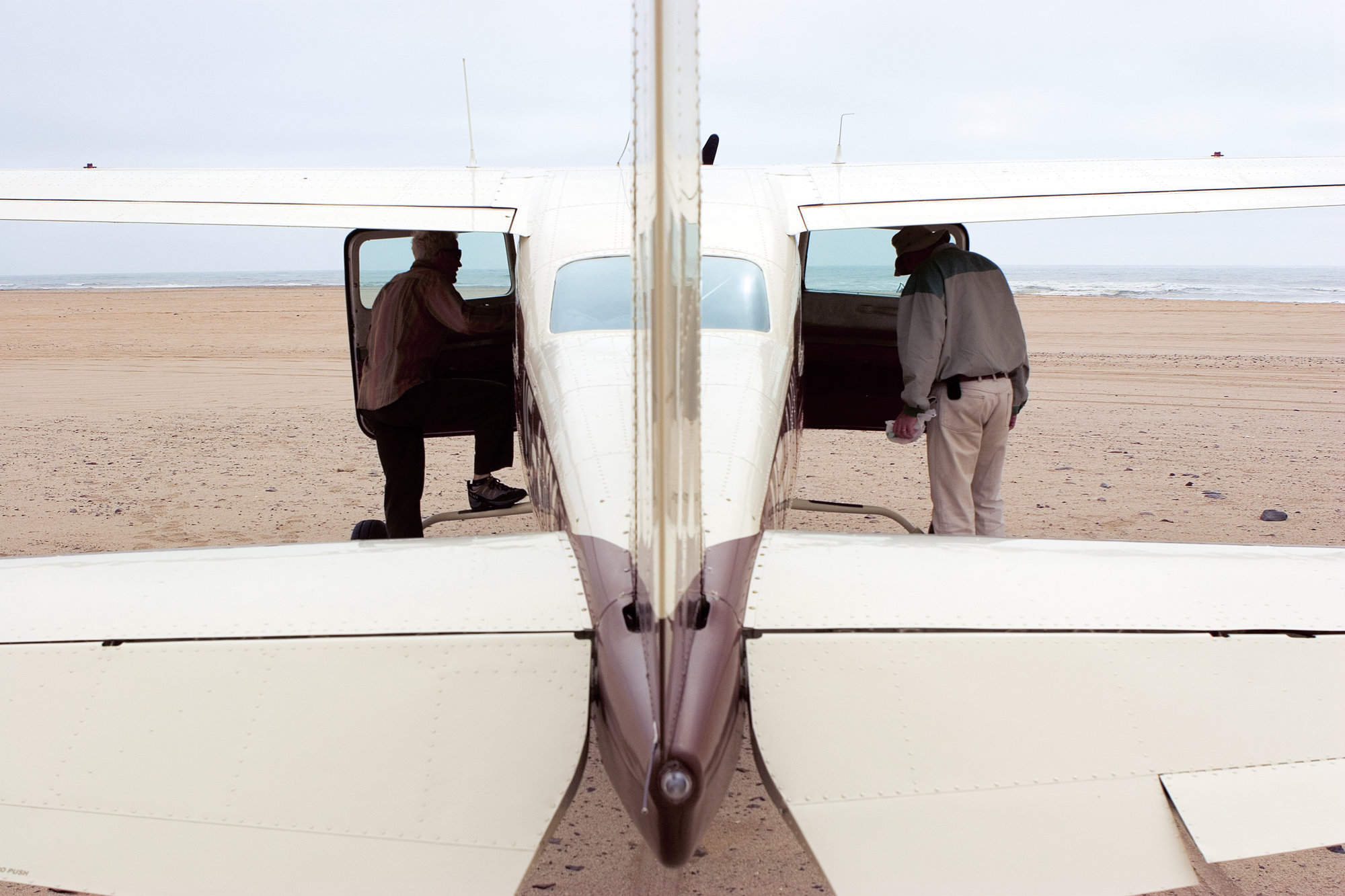
Kunene River Camp
Used exclusively on the final night of a Skeleton Coast Safari, the simple Kunene River Camp occupies a dramatic riverside location with some excellent birding.

Okahirongo Elephant Lodge
Tucked away in Namibia's remote north-west, Okahirongo Elephant Lodge offers an unexpected level of luxury, with stunning views and plenty of activities.
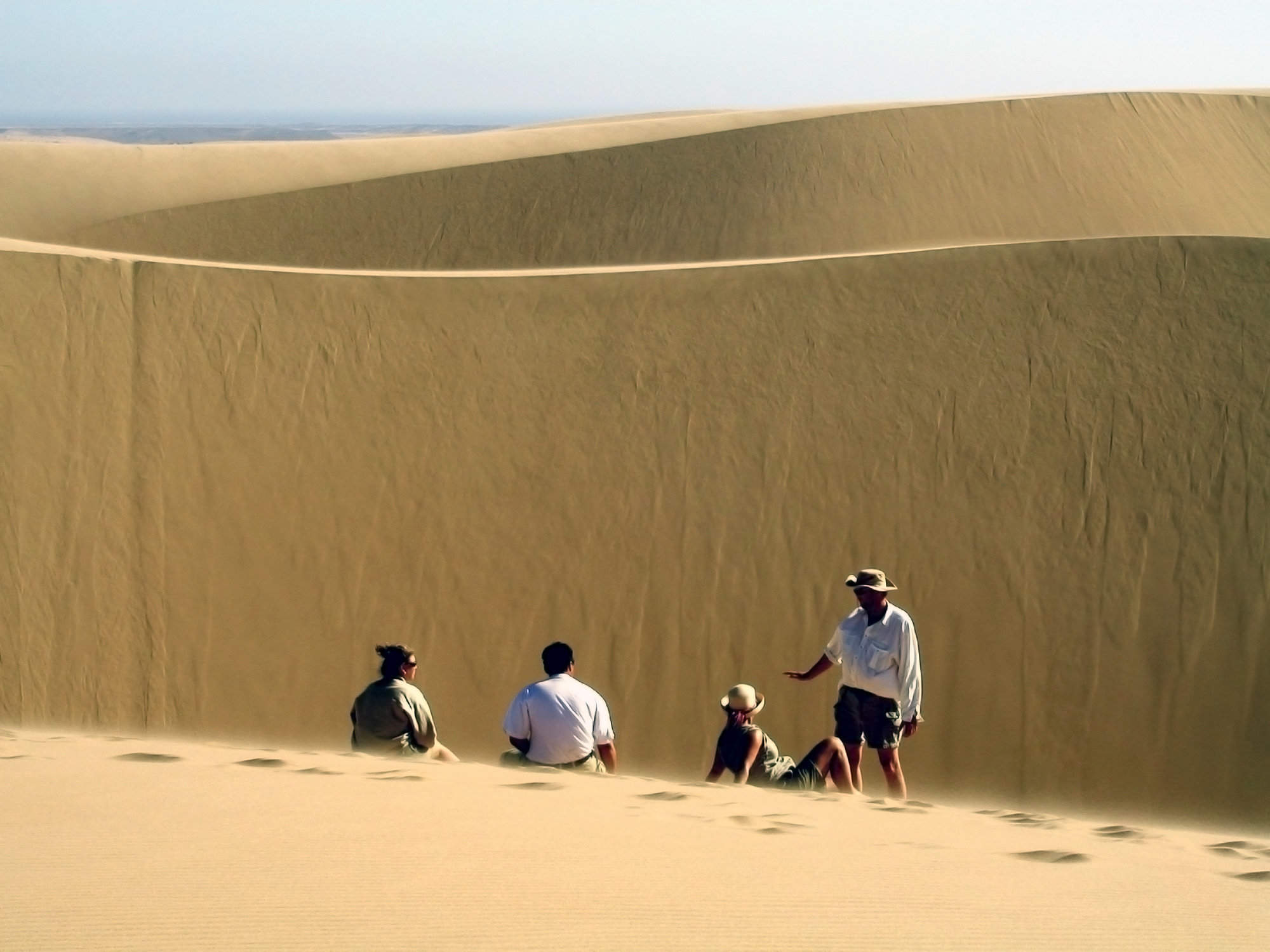
Kuidas Camp
Usually the first-night stop on a Schoeman Skeleton Coast safari, Kuidas is a very simple camp with stunning views of the Huab River valley.
When to go to Skeleton Coast & Kaokoland
Our month by month guide: What it's like to visit Shipwreck Lodge in Skeleton Coast & Kaokoland
Jan
Feb
Mar
Apr
May
Jun
Jul
Aug
Sep
Oct
Nov
Dec
Skeleton Coast & Kaokoland in January
The Skeleton Coast experiences its rainy season in January, though precipitation remains sparse in this desert environment. The Ugab River and other ephemeral rivers may briefly come to life, creating a spectacle in the usually arid landscape. Despite the rain, temperatures can still reach around 30°C/86°F.
The greening landscape makes a refreshing change, especially in desert dune seas. Migrant species arrive in force, making it an excellent time for birdwatching along the coast and in areas like the Swakop River. In the northern part of the Skeleton Coast National Park, where rains are more reliable, desert animals look healthy, with shiny coats, due to the abundance of food.
- Variable weather with fog common along coast
- Cape fur seal pups growing rapidly at colonies
- Wildlife looking well fed, with shiny coats
- Few tourists, low rates at lodges and camps
- Occasional thunderstorms inland from the coast
Our view
This is not a great time to visit
Weather in January
Skeleton Coast & Kaokoland in February
February is typically the wettest month on the Skeleton Coast, though rainfall remains patchy. The central highlands near the park's eastern border and the Kunene River region can see heavier rain. Some February days are clear and hot, while others are cooler with building clouds, sometimes culminating in short, spectacular thunderstorms. These storms can generate flash floods in the park's ephemeral rivers, bringing them dramatically to life.
The landscape feels green and alive, with insects and smaller animals more easily seen. Many birds and animals in the Skeleton Coast National Park are raising their young during this time. However, the formation of small pools in the bush and thicker vegetation can make it challenging to spot larger wildlife as they disperse with easy to access water, especially in the northern sections of the park.
- Coastal fog persists, creating eerie atmosphere
- Seal colonies bustling with activity
- Desert-adapted wildlife more dispersed
- Low tourist numbers, great deals available
- Possible inland thunderstorms, coast stays dry
Our view
This is not a great time to visit
Weather in February
Skeleton Coast & Kaokoland in March
March usually sees the Skeleton Coast's main rains tailing off, though precipitation varies across the park. Many days are clear with strong sun, while others may end with short, spectacular thunderstorms, particularly in the inland areas. These storms reduce in frequency as the month progresses.
The landscape often appears vivid and green, especially around the Ugab and Hoanib rivers. Many birds and animals are finishing raising their young, so smaller animals and insects are in evidence. In the northern part of the Skeleton Coast National Park, where rains are generally heavier, pools in the bush and thicker vegetation can make it difficult to spot larger animals. However, this is an excellent time to observe desert-adapted wildlife thriving in the temporarily lush environment.
- Weather becoming more stable along coast
- Seal pups learning to swim at Cape Cross
- Animals well-fed after inland rainy season
- Wildlife harder to spot in expansive desert
- Few tourists, ideal for solitude seekers
Our view
A good time to visit, with pros & cons
Weather in March
Skeleton Coast & Kaokoland in April
April typically brings dry weather to the Skeleton Coast, with an ever-decreasing chance of rain. Temperatures fall below their summer peak but remain pleasant and warm during the day. Nights might have a slight chill, especially in desert areas. The rains usually leave many parts of the park verdant and green, so animals are in fantastic condition, often with fast-growing young in attendance.
With less dust in the atmosphere, photographers can capture clear shots of spectacular landscapes and healthy animals. Stargazing becomes increasingly rewarding as the month progresses. In the northern sections of the Skeleton Coast National Park, water and food remain in plentiful supply, so finding big game can be trickier than later in the year. However, this is an excellent time for observing a wide variety of wildlife.
- Cooler nights, pleasant daytime temperatures
- Migrant birds begin departing the coast
- Desert flora starting to dry out inland
- Easter brings slight increase in visitors
- Clear conditions for sharp photographs
Our view
A good time to visit, with pros & cons
Weather in April
Skeleton Coast & Kaokoland in May
By May, the Skeleton Coast is usually drying out fast. If the rains have been good, the land remains green, but wildlife starts to congregate at more permanent water sources like the Hoanib and Uniab rivers. Typical days are warm with crisp, clear mornings and blue skies. Evenings are usually cool, with temperatures potentially dipping below 10°C/50°F overnight, especially in desert areas.
The air quality and clarity can be amazing, making this an ideal month for photography of the park's dramatic landscapes. Many lodges still charge low season prices, although some have started to introduce higher shoulder season rates. May's good-value rates, increasingly good wildlife sightings, beautiful landscapes, and crystal-clear air combine to make this one of the best months to visit the Skeleton Coast.
- Mild days, cool nights ideal for exploration
- Excellent clarity for coastal photography
- Wildlife starting to congregate near water
- Lodges still offer good rates
- Great sea kayaking as seal pups take to water
Our view
A very good time to visit
Weather in May
Skeleton Coast & Kaokoland in June
June brings dry conditions to the Skeleton Coast. Skies are blue and usually largely cloudless. Days are lovely, warm, and dry; nights are cold, sometimes below freezing in desert areas. Most swimming pools at lodges are outdoors and too cold for all except the very dedicated. Warm clothing is essential for early morning and late evening nature drives.
In the northern part of the Skeleton Coast National Park, wildlife viewing enters its dry-season pattern, focusing around water sources. Photographers come to the area for the superb air clarity, with minimal dust or smoke. The Cape Cross Seal Colony becomes increasingly active as the young seals join parents on fishing trips. Historically, June rates have been low, but with increasing popularity, many lodges now count it amongst their high-season months.
- Clear, bright days with cold nights
- Prime time for scenic flights over coastline
- Wildlife gravitating to scarce water sources
- Most lodges move to high season rates
- Fishing season kicks off with great catch opportunities
Our view
A very good time to visit
Weather in June
Skeleton Coast & Kaokoland in July
July brings usually warm daytime temperatures upwards of 20°C/68°F to the Skeleton Coast, along with good sightings of desert-adapted wildlife such as elephants, giraffe, oryx, jackals and perhaps even lion. Watching elephants climb hillside dunes is often a highlight! Rain is very unusual, and clear skies make for great photographs of the stark desert landscapes.
Once the sun sets, temperatures cool rapidly, bringing cold nights that may dip below freezing in desert areas. Visitors should dress in layers and be prepared for cold early-morning and late-afternoon drives. Across the park, lodges charge high season rates; many are fully booked a year or more in advance, especially during European school holidays from the latter half of July to late August.
- Dry days, cold nights perfect for stargazing
- Whale watching season begins off the coast
- Excellent time to view desert wildlife
- Peak season rates at coastal accommodation options
- Cool temperatures for nature walks
Our view
A very good time to visit
Weather in July
Skeleton Coast & Kaokoland in August
August marks the height of winter on the Skeleton Coast. Expect cloudless skies and plenty of warm sun during the day, but nights can drop to freezing in desert areas. Visitors should dress in layers and bring warm clothes for chilly mornings and evenings. It's usually been 3-4 months since any significant rain, so the land is dry with only specialist desert plants standing out in their greenery. Many landscapes appear sparse and harsh, showcasing the raw beauty of the Skeleton Coast. Desert-adapted wildlife stays close to available water sources, helping to guarantee good animal sightings, particularly in the northern part of the park.
August is the most popular time to visit, especially for families. Advance booking is essential, often over a year in advance, for stays at the best lodges within the Skeleton Coast National Park.
- Clear skies, cold nights, warm days
- Marine mammals often seen on boat cruises
- Wildlife concentrated close to water points
- Busier season, advanced bookings recommended
- Ideal conditions for coastal adventure activities
Our view
Fantastic: the very best time to visit
Weather in August
Skeleton Coast & Kaokoland in September
September brings blue, cloudless skies and fantastic desert-adapted wildlife viewing to the Skeleton Coast. Rain is almost unheard of during this month. As September progresses, both days and nights get warmer. In some areas, daily maximums can reach the low 30s Celsius / mid 80s Fahrenheit, although low humidity ensures this feels comfortable.
The air becomes dustier, occasionally augmented by smoke from distant fires, creating a hazy atmosphere that can challenge photographers - though atmospheric sunsets are a delight. In the Skeleton Coast National Park, animals stay close to remaining water sources, making September one of the best months for viewing desert animals such as elephants, oryx and even lion. Consequently, September is one of the Skeleton Coast's most popular months for visitors. Seeing how remote communities exist in this barren setting is often a highlight.
- Quickly warming temperatures, still clear skies
- Fascinating insights to Himba communities
- Fantastic desert wildlife viewing in river valleys
- High season rates, lodges often fully booked
- Occasionally dusty skies create spectacular sunsets
Our view
Fantastic: the very best time to visit
Weather in September
Skeleton Coast & Kaokoland in October
October is usually the hottest and driest month on the Skeleton Coast. Temperatures build as the month progresses; towards the end, daily highs may exceed 40°C/104°F, though the low humidity makes even this heat bearable. In exceptional years, isolated rain showers may fall in late October. More usually, the end of the dry season sees wildlife watching at its best, particularly in the northern part of the Skeleton Coast National Park. Sightings of unusual species such as brown hyena and desert lion become more regular as the animals have limited water sources.
October is popular among landscape and unique wildlife enthusiasts and commands peak-season prices, even if dust and smoke may make the air hazy, challenging photographers. Visitor numbers can fade towards the end of the month, allowing a window for last-minute bookings at some lodges.
- Hot, dry conditions prevail along coast
- Marine wildlife abundant in coastal waters
- Exceptional desert game viewing in Hoanib area
- Still peak visitor time, book accommodations early
- Dining under stars on balmy nights in the desert is special
Our view
A very good time to visit
Weather in October
Skeleton Coast & Kaokoland in November
November is unpredictable on the Skeleton Coast; sometimes dry and hot, sometimes cloudier and cooler. Typically, mornings are hot and cloudless, with clouds appearing in the afternoon. Humidity builds and eventually breaks, resulting in spectacular thunderstorms that bring convection rainfall in late afternoons. Such storms are typically sparsely distributed and highly localised, being completely absent from the most arid desert areas. Places that do get good rain, like the Hoanib and Uniab river valleys, flush green with a tangible feeling of new life, softening the harsh landscapes.
Many mammals give birth to their young during this period. Once the rains come, wildlife disperses in search of food, and game viewing in the northern part of the Skeleton Coast National Park becomes more challenging. However, this is a great time for birdwatchers, with migrant species arriving in breeding plumage.
- Variable weather as summer approaches
- Cape fur seals begin breeding season
- Wildlife dispersing with first inland rains
- Shoulder season begins, rates become moderate
- Landscapes transforming with possible rain
Our view
A good time to visit, with pros & cons
Weather in November
Skeleton Coast & Kaokoland in December
December is often a drier period between the short and long rainy season. Clear mornings can give way to building clouds and spectacular evening thunderstorms, but often with little to no rain. These storms make for atmospheric skies and an interesting time for photographers. But even relatively short showers enable plant life to erupt, carpeting this thirsty land in green and providing food for the young animals as they grow. Animals disperse widely across the Skeleton Coast National Park, which can make game viewing more challenging than in the dry season. Many birds are breeding and sporting their most colourful plumage.
Christmas and New Year fall within local summer holidays, so accommodations can be surprisingly busy, especially in and around the park's coastal areas where temperatures are cooler.
- Warmer temperatures, chance of coastal fog
- Seal breeding season peaks at colonies
- Desert-adapted wildlife often have young
- Holiday period brings more visitors to coast
- Possible inland rains create lush landscapes
Our view
This is not a great time to visit
Weather in December

Looking for inspiration on where to travel next?
Visit our trip chooser to explore your options and find inspiration for your perfect African adventure
Inspire me
